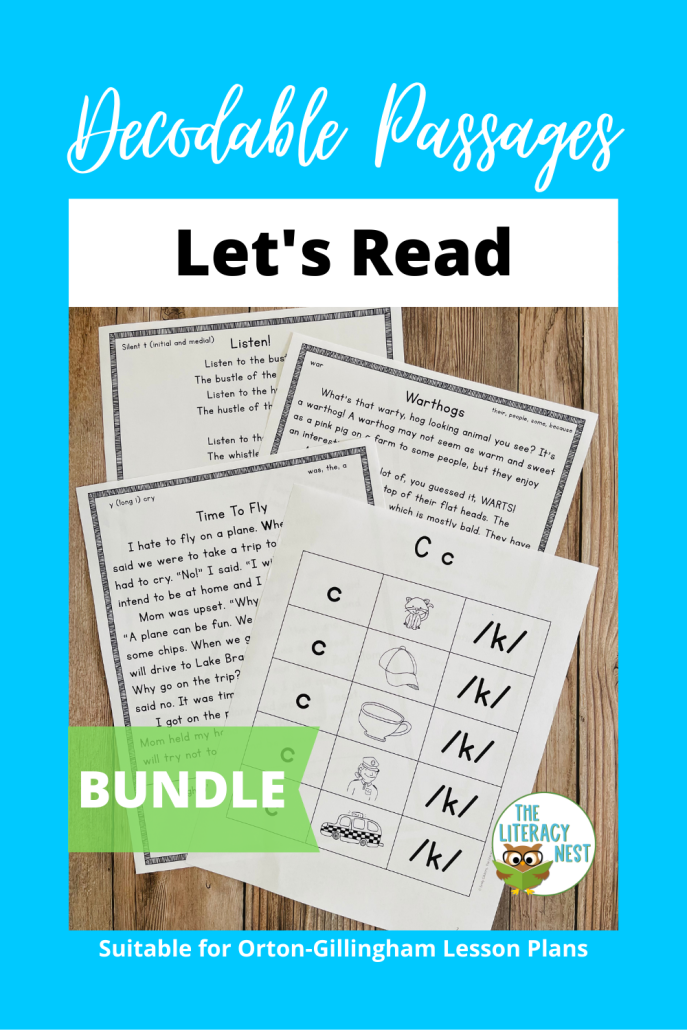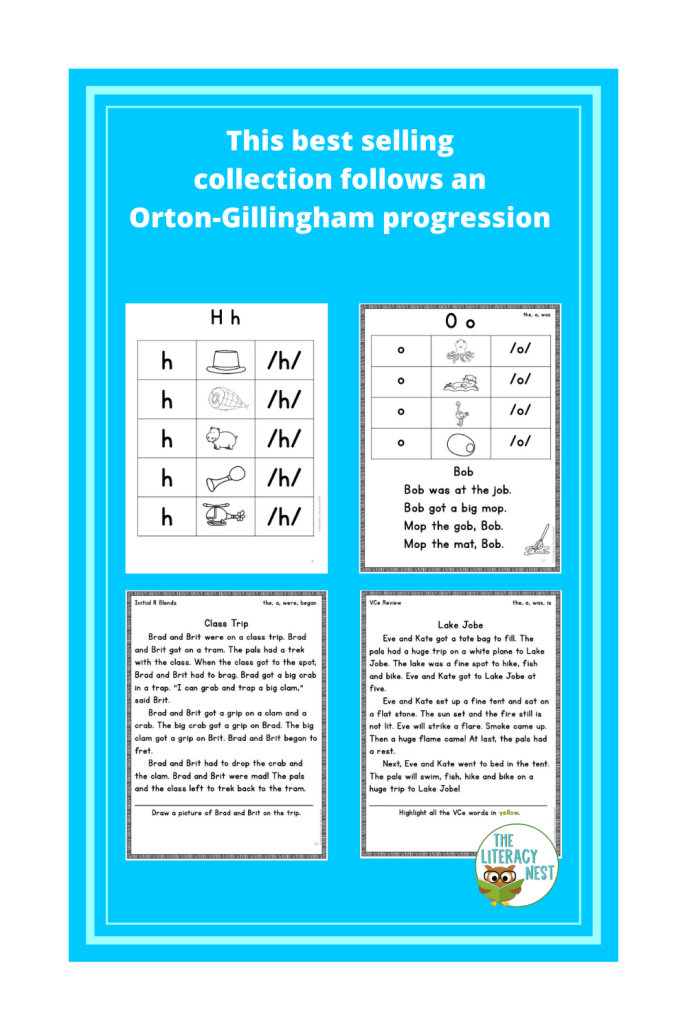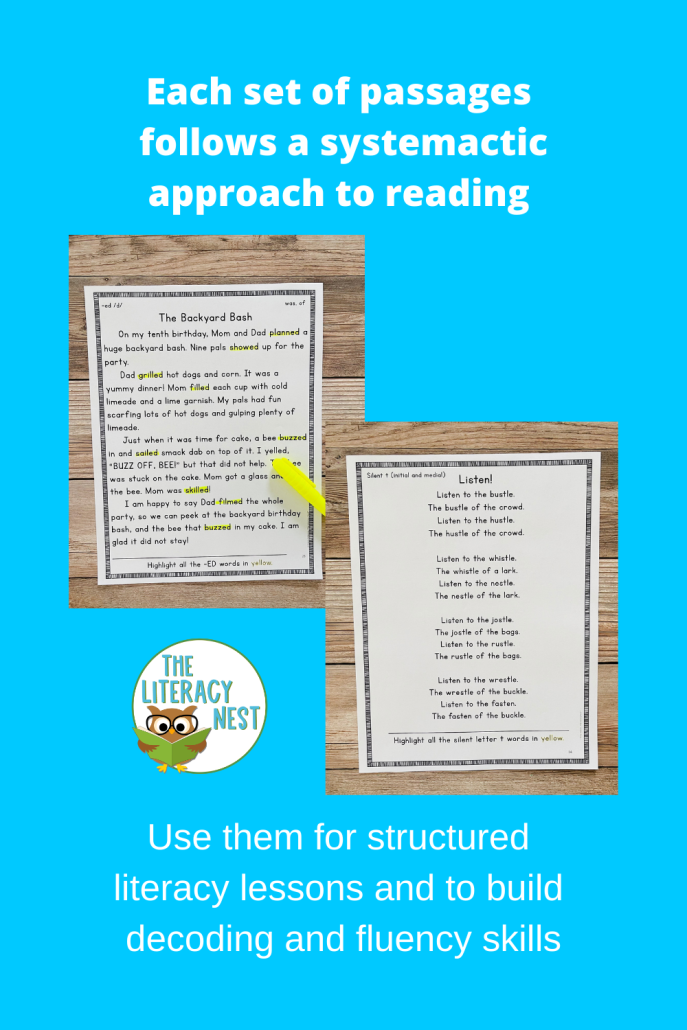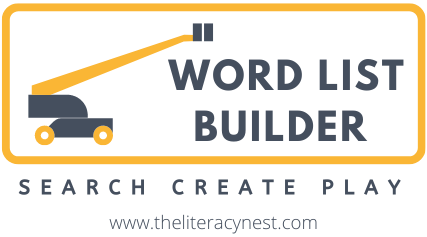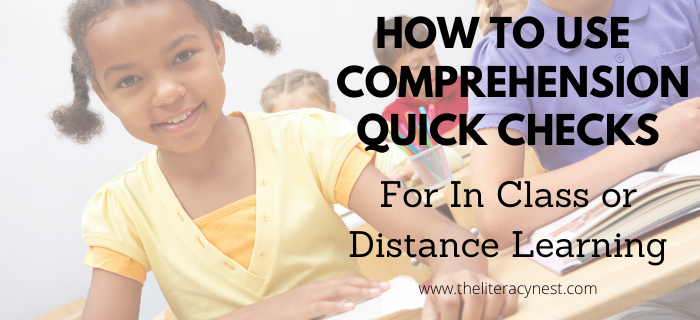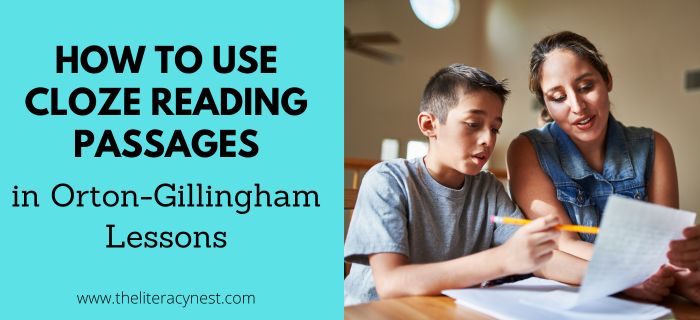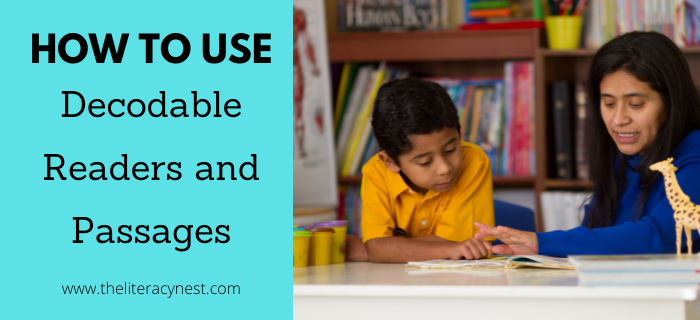7 Fluency Tips for Little Words
One of the most common patterns I see with students with dyslexia is difficulty with little words. They may get some of the more challenging content words, but then skip, substitute, or misread little words. Very often these are function words like the, or, and in. So do these types of errors matter? As teachers, how should we address this pattern when we see it? There are small but impactful fluency tips for little words!

Why do kids struggle with little words?
A simple question, but there’s not one simple answer. There are many reasons a student may have difficulty with these little words.
A classroom teacher may not encourage them to self-correct the little words. Many teachers don’t think it’s important to worry about the little words as they “don’t really affect meaning”. The thing is they DO affect meaning. Even substitutions as simple as a and the mean something very different.
For example, if someone tells you to pick up a cake at the supermarket, any cake will do. But if somebody asks you to pick up the cake at the supermarket, they’re probably referring to a specific cake, the one they ordered ahead of time that says, “Happy Birthday Mr. Principal”. A small but meaningful difference in meaning.
Another reason students might make these kinds of substitutions is because they’re trying to read too quickly. Perhaps, they may become inattentive either due to the amount of energy going into the task of reading or because of accompanying conditions such as ADHD. Students may even be using their own form of predictive text.
Fluency Goals
Find out if your student has fluency goals on their IEP. If not, an amendment may be necessary. It is also important to remember that fluency does not refer only to speed.
Fluent reading is:
- Accurate
- At an appropriate speed
- With appropriate intonation, phrasing, and prosody
Too often our students sacrifice accuracy for speed with the pressure of timed readings.
Why do we want students to be fully accurate?
Accuracy matters. Accuracy matters when a parent is reading the dosing instructions on the medication for their child’s fever. Accuracy matters when someone is filling out an application for a job or scholarship. It’s important to be able to read and understand directions correctly. Omissions, substitutions, and inaccurate word reading can affect overall fluency scores on assessments.
Furthermore, these types of little word errors have an overall effect on comprehension. These words cannot be skimmed over and can develop into an unhelpful habit. Overlooking small words can quickly develop into not applying their learning and strategies when things get tough.
Looking for Ideas to Help Your Students? Here are 7 Fluency Tips for Little Words:
Download and print our 7 Fluency Tips for Little Words checklist!
1. Check for tracking issues.
Students may use a finger, bookmark, or index card under a line of text to help them focus and remain attentive. This can also keep students from losing their place or for students who may struggle with the return sweep of moving to the next line of print.
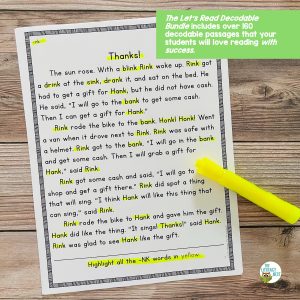
As an adult reader, I will use my finger if I’m tired or reading dense complicated text. Our students need to be taught to use their fingers in a similar fashion.
Use decodable texts to check for tracking issues! Watch Building Fluency with Decodable Text for more ideas!
2. Direct and explicit teaching of function words.
It can be helpful to spend time with students explicitly modeling and explaining how these function words are used at the sentence level. Students can understand the meaning and usage and begin to gain an awareness of how even the little words matter.
3. Provide phrasing practice that includes function words in higher frequency.
One way to improve fluency is to build familiarity and fluency with common phrases in English such as: up the hill, in the sky, to the movies, or on the way.
By practicing these phrases, not only can you increase and improve student’s overall fluency, but they can begin to become more proficient with function words.
4. Model self-correction for the students.
Use think-aloud to demonstrate self-correction and metacognitive thinking. Although we want to hold students accountable for accuracy, we also want them to take on that task of self-monitoring themselves. It’s a skill we want them to demonstrate across settings. And think aloud is one of the best ways to help them truly understand the kind of thinking they should be doing while reading.
5. Provide immediate corrective feedback.
As tempting as it can be to let the student keep reading especially if they’re working hard, it is important to encourage and insist upon accurate reading. Practice makes permanent. We want them to practice accurate reading,

It’s helpful to reinforce and praise when students beat you to it and self-correct those small words.
Check out Tips For Error Correction in Your Orton-Gillingham Lessons for more on providing immediate corrective feedback.
6. Conduct short informal fluency drill assessments.
Monitor progress with short, informal fluency assessments such as those from Readsters.
7. Use enthusiastic praise and encouragement.
Cheer on students when you notice them not only becoming more aware of monitoring and self-correcting but for progressing toward accurate word reading.
Decodable Passages for Orton-Gillingham Lessons
Looking for quality decodable passages to support the Science of Reading? Using a structured literacy approach, these decodable passages provide support for oral reading fluency and decoding practice using isolated phonics skills and spelling patterns. The Let’s Read Decodable Bundle includes over 160 decodable passages that your students will love reading with success.
You can grab it in The Literacy Nest Shop or on TpT.
Are you looking for a list of little words? Word List Builder has got you covered!
Save time searching for little words! Create customized and meaningful review, build your folder of words, create templates and games, and much more in Word List Builder.


